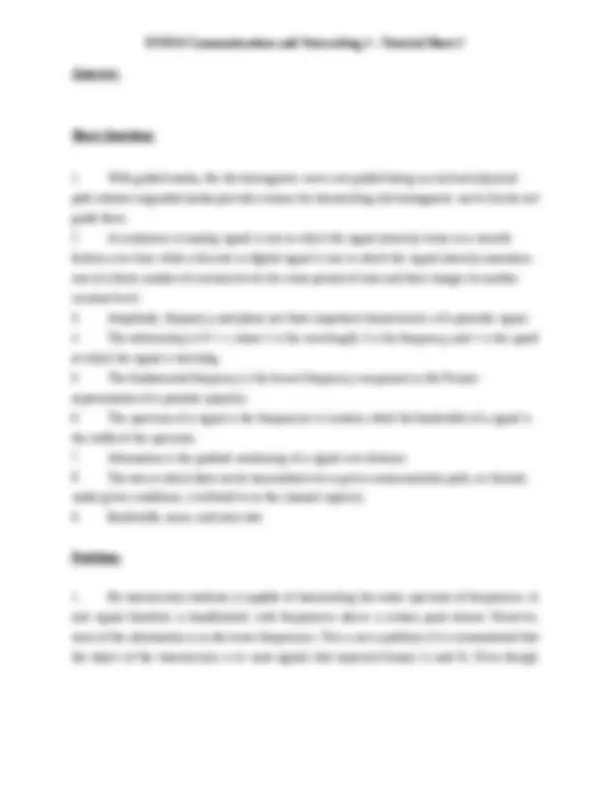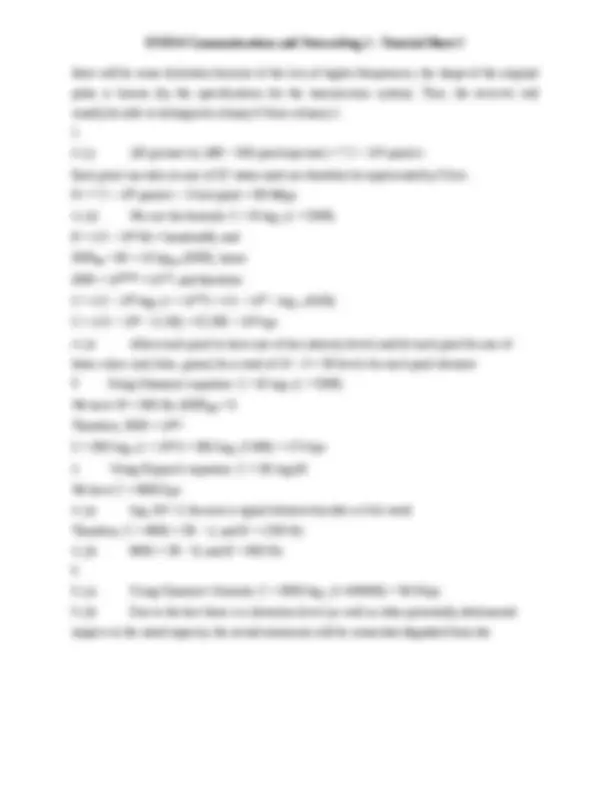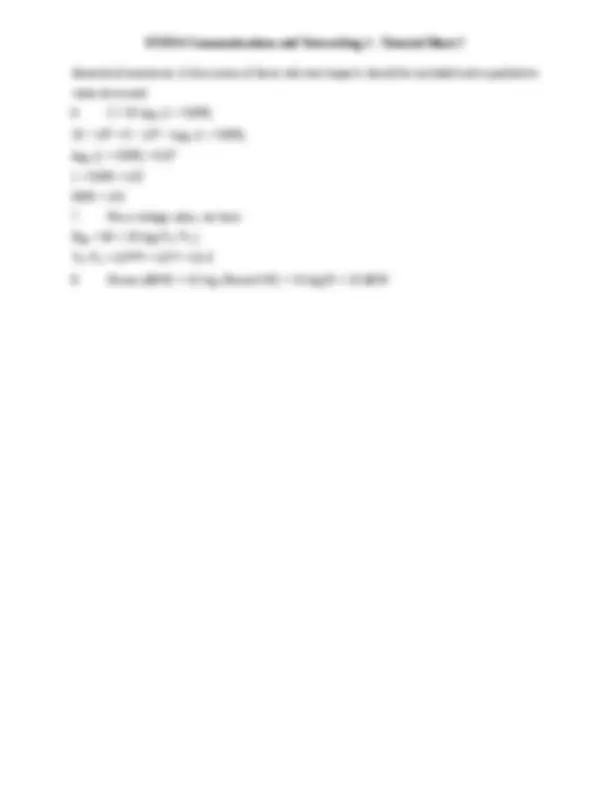





Study with the several resources on Docsity

Earn points by helping other students or get them with a premium plan


Prepare for your exams
Study with the several resources on Docsity

Earn points to download
Earn points by helping other students or get them with a premium plan
Community
Ask the community for help and clear up your study doubts
Discover the best universities in your country according to Docsity users
Free resources
Download our free guides on studying techniques, anxiety management strategies, and thesis advice from Docsity tutors
ffc hghjbmn kjhjkm jkj,m ]]]]ghcghvkjb
Typology: Exams
1 / 5

This page cannot be seen from the preview
Don't miss anything!




Short Questions:
Problems:
2.(.)a Suppose that a digitised TV picture is to be transmitted from a source that uses a matrix of 480 x 500 picture eleme nts (pixels), where each pixel can take on one of 32 intensity values . Assume that 30 pictures are sent per secon
d. (This digital source is is roughly equivalent to broadcast TV standards that have been adopted.) Find the source rate R (bps) 2.(.)b Assume that the TV picture is to be transmitted over a channel with 4.5Mhz bandwidth and a 35dB signal-to -noise ratio. Find the capacity of the channel (bps). 2.(.)c Discuss how the parameters given in part (a.) could be modified to allow transmission of colour TV signals without increasing the required value for R.
there will be some distortion because of the loss of higher frequencies, the shape of the original pulse is known (by the specifications for the transmission system). Thus, the receiver will usually be able to distinguish a binary 0 from a binary 1.
4.(.)c (30 pictures/s) (480 × 500 pixels/picture) = 7.2 × 10 6 pixels/s Each pixel can take on one of 32 values and can therefore be represented by 5 bits: R = 7.2 × 10^6 pixels/s × 5 bits/pixel = 36 Mbps 4.(.)d We use the formula: C = B log 2 (1 + SNR) B = 4.5 × 10^6 Hz = bandwidth, and SNRdB = 35 = 10 log 10 (SNR), hence SNR = 1035/10^ = 10 3.5, and therefore C = 4.5 × 10^6 log 2 (1 + 10 3.5) = 4.5 × 10 6 × log 2 (3163) C = (4.5 × 10^6 × 11.63) = 52.335 × 10 6 bps
4.(.)e Allow each pixel to have one of ten intensity levels and let each pixel be one of three colors (red, blue, green) for a total of 10 × 3 = 30 levels for each pixel element.
We have W = 300 Hz (SNR)dB = 3 Therefore, SNR = 100. C = 300 log 2 (1 + 100.3) = 300 log 2 (2.995) = 474 bps
5.(.)a Using Shannon’s formula: C = 3000 log 2 (1+400000) = 56 Kbps 5.(.)b Due to the fact there is a distortion level (as well as other potentially detrimental impacts to the rated capacity, the actual maximum will be somewhat degraded from the
theoretical maximum. A discussion of these relevant impacts should be included and a qualitative value discussed.